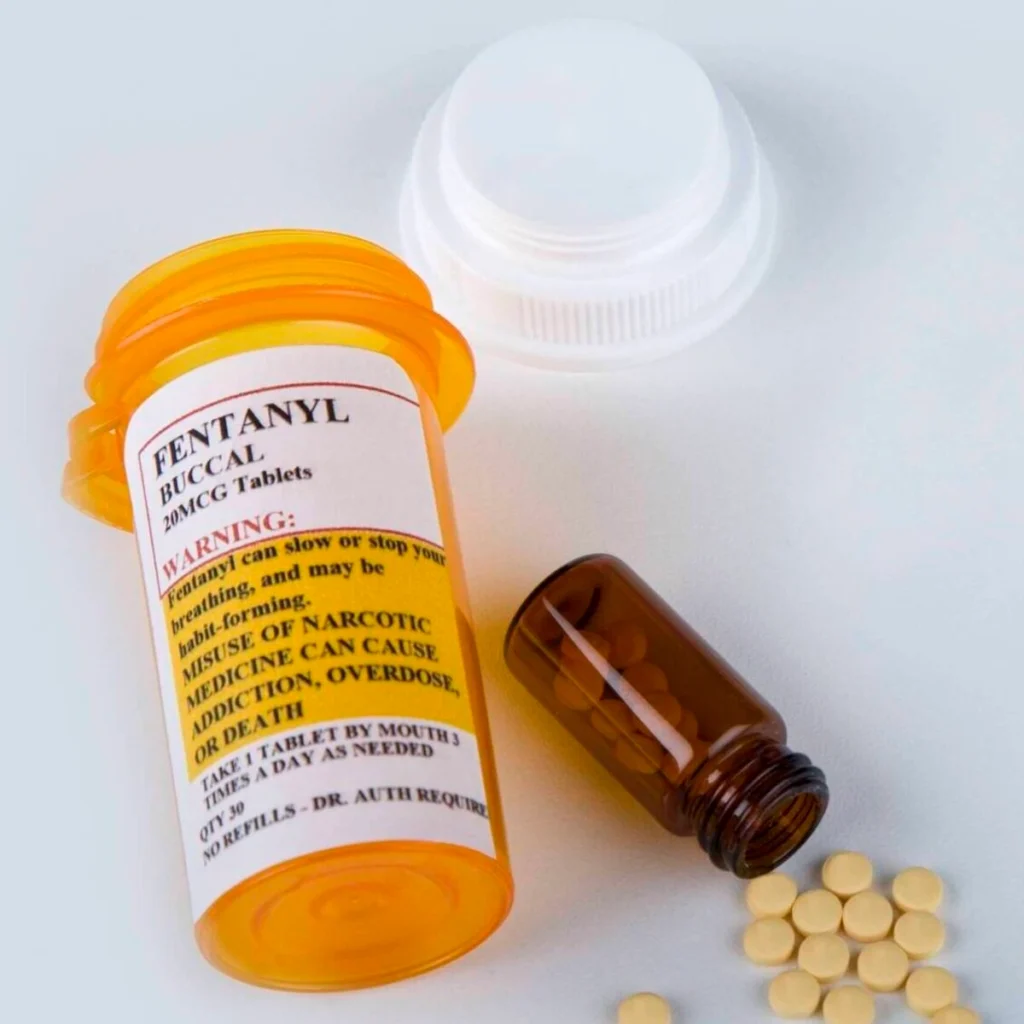
Addiction & Trauma Recovery Center
Licensed by Thai Ministry of Health #84-03-00294
The Fentanyl Crisis:
America’s Deadliest Drug
The Rise of the Fentanyl Crisis
The fentanyl crisis has become one of the most urgent public health emergencies in the USA, Canada, and the UK. Over the past decade, fentanyl-related overdoses have skyrocketed, overtaking heroin and prescription opioids as the leading cause of drug overdose deaths.
Fentanyl is a synthetic opioid that is 50 to 100 times stronger than morphine, making even small doses extremely lethal. Initially developed for severe pain management, illicitly manufactured fentanyl is now flooding the drug market, contributing to thousands of deaths every year.
The Fentanyl Crisis in the USA and Its Impact
- The USA has seen record-breaking overdose deaths linked to fentanyl, with over 70% of opioid-related fatalities involving fentanyl.
- Canada and the UK have also reported sharp increases in fentanyl-related overdoses, often involving fentanyl-laced drugs.
- Fentanyl is now commonly found in counterfeit prescription pills, heroin, and even stimulants like cocaine and methamphetamine.
The rise of the fentanyl crisis has also been exacerbated by its ease of production and distribution. Unlike plant-based opioids such as heroin, fentanyl can be synthesized in laboratories using relatively inexpensive and accessible chemicals, making it highly profitable for drug traffickers.
This has led to the proliferation of illicit fentanyl production, particularly in clandestine labs in countries like China and Mexico, where it is then smuggled into the USA, Canada, and the UK. The drug’s potency allows traffickers to transport small, easily concealable quantities that can be cut into other substances, maximizing profits while increasing the risk of accidental overdose.
This combination of high profitability and low logistical barriers has made fentanyl a preferred product for criminal organizations, further fueling its spread and deepening the crisis. Additionally, the rise of online drug markets and cryptocurrency transactions has made it easier for buyers to access fentanyl-laced substances, complicating efforts to curb its distribution.

How Fentanyl is Laced into Other Drugs
One of the most dangerous aspects of the fentanyl crisis is that fentanyl-laced drugs are increasingly common. Many users unknowingly consume fentanyl when taking other substances, leading to accidental overdoses.
Why Is Fentanyl So Dangerous Compared to Heroin?
- Extremely Potent – A tiny dose (as small as 2 milligrams) can be fatal.
- Difficult to Detect – Often mixed into heroin, cocaine, or pressed into counterfeit pills.
- Rapid Overdose Risk – Because of its potency, users can stop breathing within minutes.
Common Fentanyl-Laced Drugs
- Counterfeit prescription pills (Xanax, Percocet, Oxycodone, Adderall)
- Heroin (dealers cut heroin with fentanyl to increase potency)
- Cocaine and methamphetamine (unexpected fentanyl contamination in stimulants)
- Fake painkillers sold on the dark web
The widespread lacing of fentanyl into other drugs has created a pervasive sense of unpredictability and danger in the illicit drug market. Unlike traditional opioids, where users might have a general sense of dosage and potency, fentanyl’s presence in other substances removes any semblance of control or predictability.
For example, a person intending to use cocaine or methamphetamine—substances not typically associated with opioid overdoses—may inadvertently consume a lethal dose of fentanyl, leading to tragic consequences. This unpredictability is compounded by the fact that fentanyl is often unevenly distributed within a batch of drugs, meaning one pill or dose could be relatively harmless while another from the same batch could be deadly. This has created a climate of fear and mistrust among drug users, many of whom are now turning to harm reduction strategies like fentanyl test strips to detect its presence.
However, even these measures are not foolproof, as new analogs and derivatives of fentanyl, such as carfentanil, are emerging and may not always be detected by standard testing methods. This ever-evolving landscape makes the fentanyl crisis particularly challenging to address and underscores the need for comprehensive public health interventions.

Signs and Symptoms of Fentanyl Overdose
Because fentanyl is so potent, recognizing fentanyl overdose signs quickly is crucial. Overdoses can happen within seconds to minutes after ingestion.
Signs of Fentanyl Overdose and Prevention Strategies
- Extreme drowsiness or loss of consciousness
- Slow, shallow, or stopped breathing
- Blue or grayish skin (cyanosis)
- Pinpoint pupils
- Choking or gurgling sounds
- Limp body and unresponsiveness
How Can One Recognize a Fentanyl Overdose?
If someone is unresponsive and showing signs of respiratory depression, assume it’s a fentanyl overdose and act immediately:
- Call emergency services immediately (911 in the US, 999 in the UK, 112 in Europe).
- Administer Naloxone (Narcan) if available. Naloxone is an opioid reversal drug that can temporarily block fentanyl’s effects.
- Perform rescue breathing if breathing has stopped.
- Stay with the person until help arrives and give additional doses of naloxone if needed.
In addition to the immediate physical symptoms, the psychological and emotional toll of witnessing or experiencing a fentanyl overdose can be profound. For bystanders, the sudden and severe nature of a fentanyl overdose can be traumatic, especially if they are unprepared or lack access to naloxone. This underscores the importance of widespread education and naloxone distribution programs, which empower individuals to respond effectively in overdose situations.
Moreover, the stigma surrounding drug use often prevents people from seeking help or carrying naloxone, fearing judgment or legal repercussions. Public health campaigns that normalize naloxone as a lifesaving tool, similar to an EpiPen for allergic reactions, are critical in reducing this stigma and saving lives. Additionally, the rapid onset of a fentanyl overdose means that time is of the essence—delays in administering naloxone or performing rescue breathing can result in irreversible brain damage or death.
This highlights the need for community-based training programs that teach not only how to recognize and respond to overdoses but also how to create a supportive environment for those struggling with substance use. By addressing both the physical and social dimensions of the crisis, we can better equip communities to combat the devastating impact of fentanyl overdoses.
Treatment Options for Fentanyl Addiction
Overcoming fentanyl addiction is challenging due to its intense withdrawal symptoms and powerful cravings. However, fentanyl addiction treatment options are available to help individuals recover safely.
What Treatment Options Are Available for Fentanyl Addiction?
- Medical Detox – Withdrawal from fentanyl should be done under medical supervision to manage severe withdrawal symptoms such as pain, nausea, and insomnia.
- Medication-Assisted Treatment (MAT) – FDA-approved medications like Methadone, Suboxone (Buprenorphine), and Naltrexone can help reduce cravings and prevent relapse.
- Inpatient Rehab Programs – Structured treatment in a rehab facility can provide therapy, counseling, and medical supervision.
- Outpatient Programs & Therapy – Cognitive Behavioral Therapy (CBT) and group support programs like Narcotics Anonymous (NA) are essential for long-term recovery.
Another critical aspect of treating fentanyl addiction is addressing the underlying factors that contribute to substance use disorders, such as mental health conditions, trauma, or socioeconomic challenges. Many individuals struggling with fentanyl addiction also experience co-occurring disorders like depression, anxiety, or post-traumatic stress disorder (PTSD), which can exacerbate addiction and hinder recovery.
Integrated treatment approaches that combine addiction care with mental health support are essential for addressing these complex needs. For example, trauma-informed therapy can help individuals process past experiences that may have led to substance use, while holistic therapies like mindfulness, yoga, and art therapy can provide additional tools for managing stress and emotional triggers. Furthermore, peer support programs, such as Narcotics Anonymous or SMART Recovery, offer a sense of community and accountability, which are vital for maintaining sobriety.
By taking a comprehensive, individualized approach to treatment, healthcare providers can better support individuals in overcoming fentanyl addiction and rebuilding their lives. This multifaceted strategy not only improves recovery outcomes but also reduces the risk of relapse, offering hope for long-term healing and stability.
Harm Reduction Strategies and Prevention Efforts
Given the scale of the fentanyl crisis, harm reduction strategies are critical in preventing overdose deaths and reducing addiction rates.
Key Harm Reduction Approaches
- Naloxone Distribution Programs – Expanding access to naloxone can save lives in overdose situations.
- Supervised Consumption Sites – Safe injection sites allow drug users to consume substances under medical supervision.
- Fentanyl Testing Strips – These strips help detect fentanyl in other drugs, preventing accidental overdoses.
- Public Education Campaigns – Raising awareness about fentanyl-laced drugs and the risks of illicit pills.
Government and Community Responses
- The U.S. and Canadian governments are cracking down on illicit fentanyl suppliers and increasing funding for addiction treatment.
- The UK is expanding harm reduction initiatives to curb rising fentanyl-related overdoses.
- Nonprofits and recovery organizations continue to advocate for policy changes and increased access to life-saving treatments.
In conjunction with these strategies, community-based outreach programs play a vital role in harm reduction by meeting individuals where they are and providing nonjudgmental support. Outreach workers often distribute naloxone kits, fentanyl test strips, and educational materials in high-risk areas, such as homeless encampments, nightlife districts, and public transit hubs.
These programs also connect individuals with resources like addiction treatment, mental health services, and housing support, addressing the root causes of substance use. Mobile harm reduction units, which travel to underserved areas, have proven particularly effective in reaching marginalized populations who may not have access to traditional healthcare services. Furthermore, peer-led initiatives, where individuals with lived experience of addiction guide others through recovery, foster trust and understanding within communities.
By combining these grassroots efforts with broader policy changes, such as decriminalizing drug possession and increasing funding for harm reduction, societies can create a more compassionate and effective response to the fentanyl crisis. This multi-tiered approach not only saves lives but also helps reduce the stigma surrounding addiction, encouraging more people to seek help.
FAQs About the Fentanyl Crisis
Why is fentanyl considered a deadly drug?
Fentanyl is significantly more potent than heroin and morphine, making overdose much more likely, even in small doses. It can also cause respiratory failure within minutes.
Another reason fentanyl is considered so deadly is its unpredictable presence in the illicit drug supply. Unlike drugs that are sold in pure forms, fentanyl is often mixed into other substances without the user’s knowledge, creating a dangerous game of Russian roulette. For instance, a person intending to use a small amount of heroin or a single prescription pill may unknowingly ingest a lethal dose of fentanyl, as even a few grains of the substance can be fatal.
This unpredictability is compounded by the fact that fentanyl is frequently pressed into counterfeit pills designed to look like legitimate medications, such as Xanax or Oxycodone, deceiving users who believe they are consuming a safer, regulated product. Additionally, the rise of fentanyl analogs—chemically similar but often even more potent variations of the drug—adds another layer of risk, as these analogs may not respond as predictably to overdose-reversal medications like naloxone.
This combination of potency, unpredictability, and deception makes fentanyl one of the most dangerous substances in the illicit drug market today.
How can one recognize a fentanyl overdose?
Look for symptoms such as shallow breathing, unconsciousness, blue lips or skin, and pinpoint pupils. Immediate action, including naloxone administration and emergency medical help, is crucial.
Recognizing a fentanyl overdose also requires understanding the context in which it occurs. For example, if someone has recently used a substance—whether it’s a pill, powder, or injectable—and suddenly becomes unresponsive or exhibits unusual behavior, it’s important to consider the possibility of fentanyl involvement.
Even if the person believed they were using a different drug, the prevalence of fentanyl in the illicit market means that contamination is always a risk. Additionally, bystanders should be aware of environmental clues, such as the presence of drug paraphernalia or empty pill bottles, which can provide context for the symptoms being observed.
It’s also critical to note that fentanyl overdoses can occur rapidly, sometimes within seconds or minutes, leaving little time for hesitation. This underscores the importance of acting quickly and decisively, even if there’s uncertainty about the substance involved. By being vigilant and informed, individuals can play a vital role in saving lives during an overdose emergency.
What treatment options are available for fentanyl addiction?
Treatment includes medical detox, Medication-Assisted Treatment (MAT), inpatient rehab, therapy, and relapse prevention programs.
Long-term recovery from fentanyl addiction often requires a holistic approach that addresses the physical, emotional, and social aspects of the individual’s life. For instance, many people recovering from fentanyl addiction benefit from lifestyle changes that promote overall well-being, such as regular exercise, balanced nutrition, and stress management techniques like meditation or mindfulness.
Support systems, including family therapy and community-based recovery groups, can also play a crucial role in helping individuals rebuild relationships and establish a stable, drug-free environment. Furthermore, vocational training and educational programs can provide opportunities for personal growth and economic stability, reducing the risk of relapse by addressing factors like unemployment or lack of purpose.
By combining evidence-based treatments with these broader supports, individuals can develop the tools and resilience needed to sustain recovery and lead fulfilling lives free from addiction.
Conclusion
The fentanyl crisis is a devastating public health emergency, with fentanyl-laced drugs increasing overdose deaths worldwide. By recognizing fentanyl overdose signs, implementing harm reduction strategies, and providing fentanyl addiction treatment, we can help save lives and support recovery.
If you or someone you know is struggling with fentanyl addiction, seek professional help immediately—treatment is available, and recovery is possible.
Addressing the fentanyl crisis also requires a societal shift in how we view and respond to addiction. Stigma and misinformation often prevent individuals from seeking help, fearing judgment or legal consequences. Public education campaigns that emphasize addiction as a medical condition rather than a moral failing can help break down these barriers, encouraging more people to access life-saving resources.
Additionally, policymakers must prioritize funding for comprehensive addiction treatment programs, harm reduction initiatives, and research into innovative solutions, such as vaccines for opioid addiction or advanced overdose-reversal medications. Communities can also play a role by fostering environments of compassion and support, where individuals feel safe to seek help without fear of discrimination.
By combining individual action with systemic change, we can create a more effective and humane response to the fentanyl crisis, ultimately reducing its toll on individuals, families, and society as a whole.





















